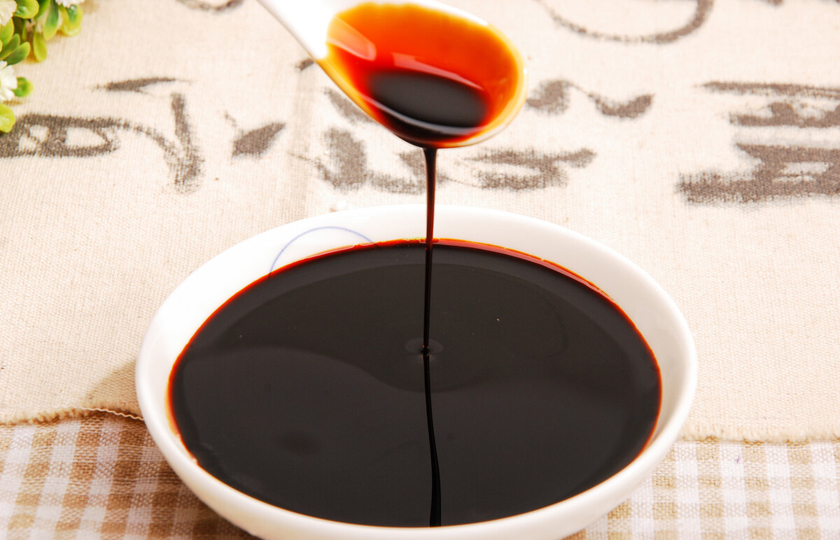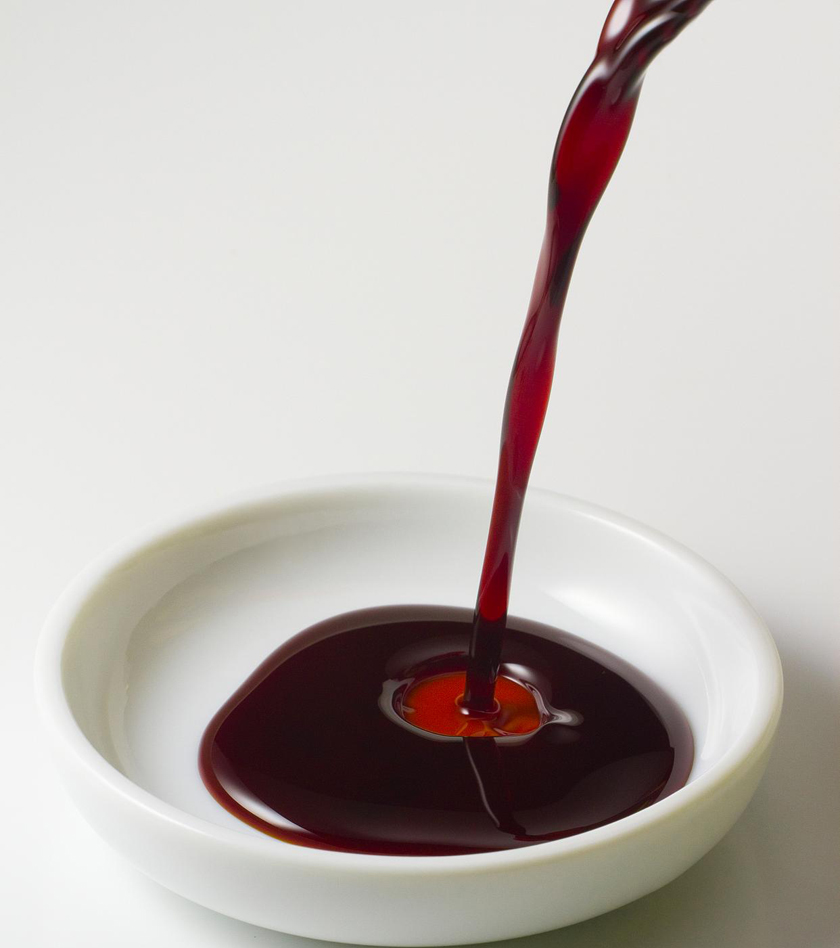Explained: Why Is Dark Soy Sauce So Dark?

I wonder if you've ever been curious about why dark soy sauce is so dark? And what's the difference between it and light soy sauce? Today, let's take a deep dive into this amazing condiment, dark soy sauce, and uncover the secrets behind its "black coat."
What Kind of Condiment is Dark Soy Sauce?
Dark soy sauce is a type of soy sauce. It originated in China and is a dark-colored soy sauce made through special processing on the basis of light soy sauce.
Traditional dark soy sauce is made by fermenting soybeans, wheat, salt, and water. Different from light soy sauce, dark soy sauce undergoes a longer fermentation period in the later stage of production and is further processed with caramel color or molasses, finally forming a thick texture and a deep color.
Its core function is to add color to dishes. For example, the attractive red glow in dishes like braised pork, marinated flavors, or soy-sauce braised dishes owes a lot to the finishing touch of dark soy sauce.
In Cantonese, the word “抽” (chāu) means “to extract". Dark soy sauce is the soy sauce "finally extracted" from the fermentation vat. It gets its name because of the long fermentation time and high concentration level. Although its saltiness is lighter than that of light soy sauce, its sweetness is more prominent, making it a double-duty player in Chinese cuisine aesthetics and flavor.
Why Dark Soy Sauce Is So Dark?
The "darkness" of dark soy sauce doesn't occur naturally. Instead, it is the magic of craftsmanship and time.
The First Layer of Magic: The Enhancement of Caramel Color
In modern industrial production, dark soy sauce often has edible caramel color added to it. This natural pigment is made by caramelizing sugars at high temperatures and can quickly give the soy sauce a deep black and shiny color. This is why just a small amount of dark soy sauce can completely transform an entire pot of dishes.
The Second Layer of Magic: The Deepening of the Maillard Reaction
Dark soy sauce made through traditional brewing methods relies on the continuous decomposition of soy protein and wheat starch during months of fermentation, which generates a large amount of amino acids and reducing sugars. When these substances are heated, they undergo a Maillard reaction (a non-enzymatic browning reaction), producing large brown-black molecules that further deepen the color.
The Third Layer of Magic: The Accumulation of Time
After fermentation, dark soy sauce also needs to go through months of static ripening. During this period, water evaporates, the soy sauce becomes concentrated, and the color naturally becomes even deeper and richer.

The Differences between Dark Soy Sauce and Light Soy Sauce
Color
The color of light soy sauce is relatively light, usually presenting a light reddish-brown color, just like a cup of light tea, clear and transparent.
Dark soy sauce, on the other hand, is deep black, like strong coffee, with a rich, shiny color.
Taste
Light soy sauce tastes salty and fresh. It emphasizes the natural freshness of the ingredients, offering a relatively refreshing taste. For example, when adding a bit of light soy sauce to cold cucumber salad, it can enhance the freshness without overpowering the cucumber's natural refreshing texture.
Dark soy sauce, however, has a sweet taste in addition to saltiness and also has a strong sauce aroma, with a mellow taste.
Usage
Light soy sauce is mainly used for seasoning and is widely used in stir-frying, making cold dishes, and dipping. For example, when stir-frying shredded green peppers and pork, adding some light soy sauce can make the dish more delicious. Adding a little light soy sauce to cold dishes can also enhance the flavor.
Dark soy sauce is mainly used for coloring dishes. For instance, when making braised pork, marinated flavors, etc., to make the dishes look bright red and attractive, dark soy sauce will be added.
Production Process
Light soy sauce is mainly made from soybeans or black soybeans and flour as the main raw materials and is extracted after fermentation and maturation. The brewing cycle of light soy sauce is relatively short, usually taking a few months to about a year to complete.
Dark soy sauce is made by adding caramel color to light soy sauce and then going through special processes such as sun-drying or long-term fermentation and concentration. The production process is more complex and takes longer.
Substitutes for Dark Soy Sauce
If you don't have dark soy sauce on hand, you can use the following methods for "emergency coloring":
Light Soy Sauce + Caramel/Sugar Color: Add 1 spoon of light soy sauce and half a spoon of melted white sugar to make caramel. After mixing, the color and flavor are close to those of dark soy sauce.
Soy Sauce Paste: Taiwanese soy sauce paste has a thick texture and a natural sweetness, making it suitable for braising or marinating.
Brown Sugar + Light Soy Sauce: The minerals in brown sugar can react with amino acids to mimic the color of dark soy sauce (the ratio is 1:2).
Oyster Sauce + Dark-colored Soy Sauce: The viscosity and freshness of oyster sauce can partially replace dark soy sauce, but be careful to reduce the amount of salt used.
Note: Substitutes cannot fully replicate the complex flavor of dark soy sauce. It is recommended to use genuine dark soy sauce whenever possible.
How to Use Dark Soy Sauce?
The Most Common Braised Dishes
In classic Chinese dishes such as braised pork, braised pork ribs, and braised fish, dark soy sauce is an essential condiment.
Generally, after the ingredients are stir-fried in the pot for a while, add an appropriate amount of dark soy sauce to quickly attach it to the surface of the ingredients at high temperature and color the dish.
However, be careful not to add too much dark soy sauce, otherwise, it will affect the taste of the dish.
Barbecue Dishes
When roasting some meats or vegetables, dark soy sauce can also be used for seasoning and coloring. For example, when roasting chicken wings, make a few incisions on the surface of the wings to facilitate flavor penetration.
Then put the chicken wings in a bowl, add an appropriate amount of dark soy sauce, light soy sauce, cooking wine, pepper powder, ginger slices and other seasonings. Massage with your hands to make the seasonings fully penetrate into the chicken wings. After marinating for a few hours, put them in the oven to roast.
The roasted chicken wings not only look good but also taste great.
Marinated Flavors
When marinating various meats, eggs, and soy products, dark soy sauce also plays an important role. Adding an appropriate amount of dark soy sauce to the marinade can make the marinated flavors bright red and fragrant.
The Nutritional Value of Dark Soy Sauce
Dark soy sauce is not just a condiment; it also hides health secrets:
Treasure Trove of Amino Acids: High-quality dark soy sauce has an amino acid nitrogen content of ≥ 0.8g/100ml (superior standard), which can provide essential amino acids for the human body.
Trace Element Supplement: It contains minerals such as iron, calcium, and phosphorus. Moderate consumption is helpful for enriching blood and nourishing blood.
Antioxidant Components: Polyphenolic substances produced during fermentation have a certain antioxidant activity.
Health Tip: Dark soy sauce has a relatively high sodium content (about 600 - 800mg/15ml). Patients with hypertension need to control the amount used or choose "reduced-salt dark soy sauce."























